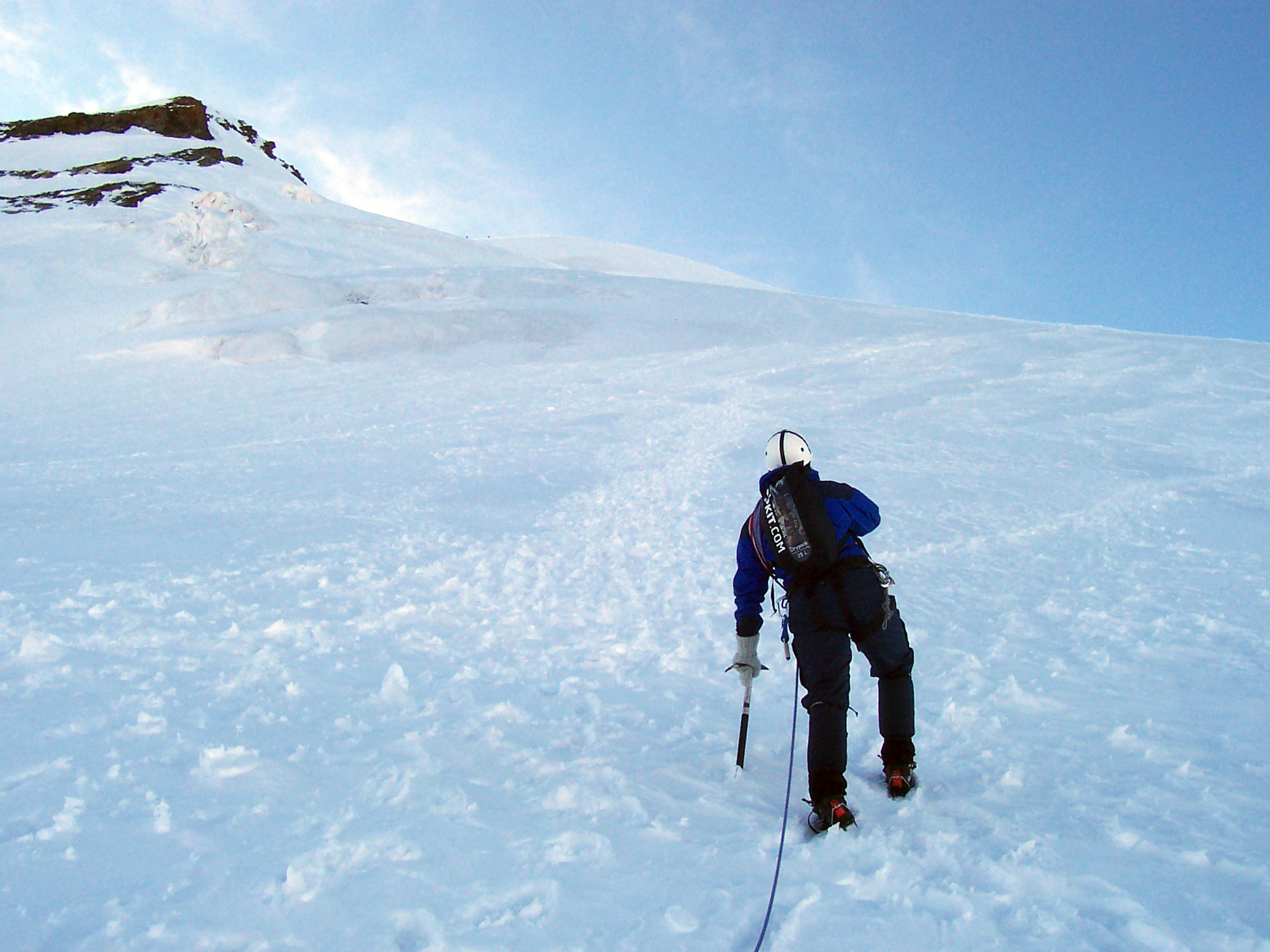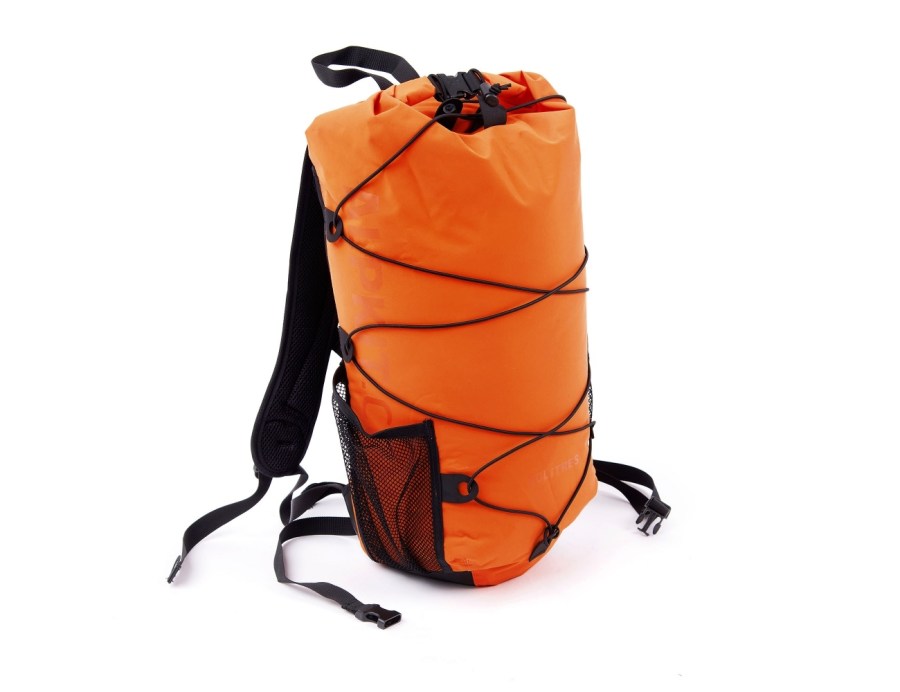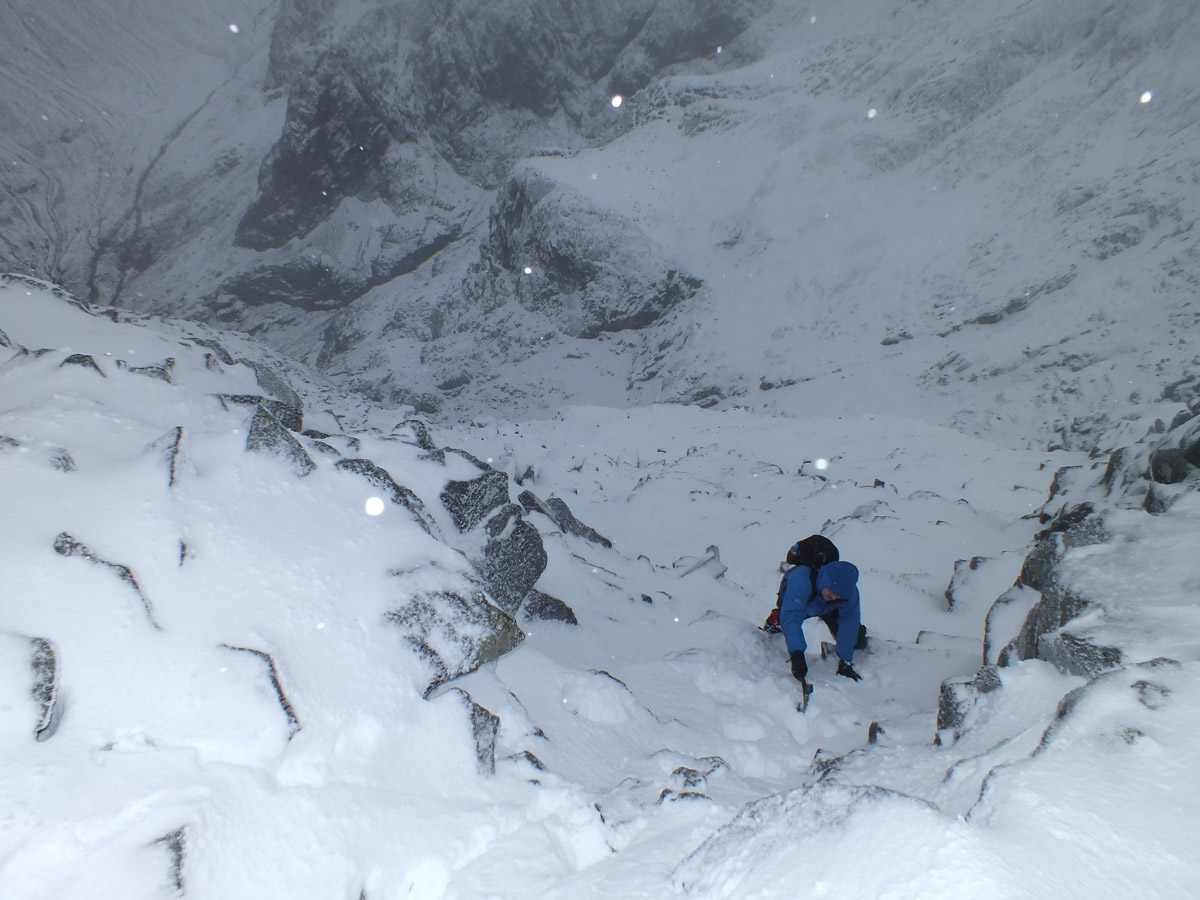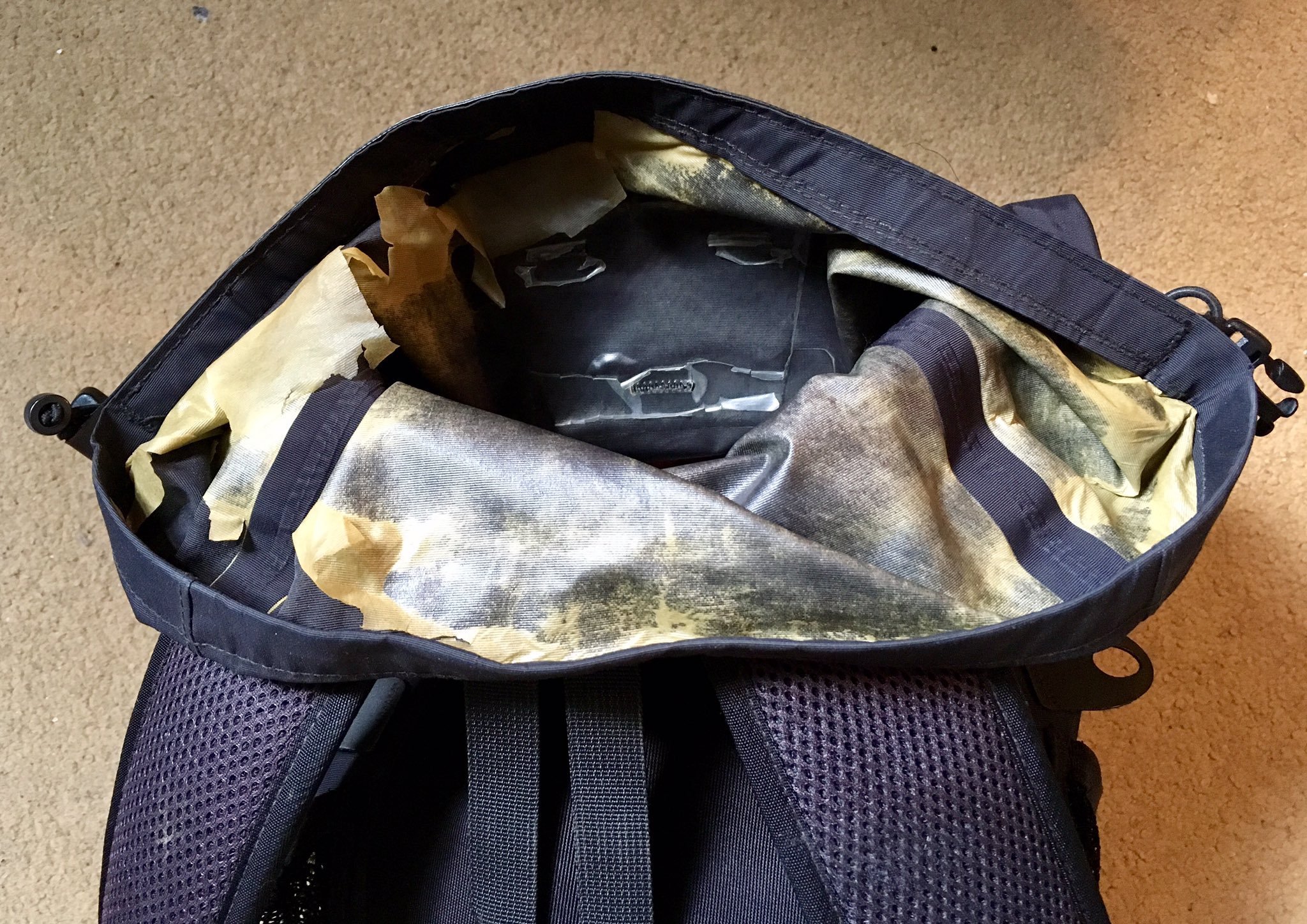Alex Roddie tests a minimalist waterproof daypack to destruction over seven years
I’ve used Alpkit’s Gourdon waterproof daypacks for just over a decade. I started out with the original Gourdon 25 – little more than a drybag with straps (and, in 2007, a clear window that has since been removed from the range) – before upgrading to the slightly less minimalist Gourdon 20 in 2010. Here is my review after using it to destruction.
Like the 25-litre version, the Gourdon 20 is a hybrid rucksack/drybag. The pack’s body is a simple bag of waterproof TPU nylon with taped seams and a roll-top closure. The back system is very basic – just a removable padded panel in a sleeve. It’s compatible with hydration bladders up to around 1.5-litre capacity.
On the outside, the Gourdon 20 has a medium mesh pocket on either side, a compression bungee system covering most of the pack’s front and sides, and a basic harness: mesh shoulder straps, sternum strap, and a minimal waist strap made from nylon tape.
That’s all there is to it. Total weight is a very respectable 470g, but it can be trimmed to below 400g by removing the back panel and other bits and pieces if needed.
Simplicity and versatility is the name of the game. While the Gourdon 25 sometimes felt too minimal for use on the hill, the addition of side pockets in the Gourdon 20 really extended the product’s usefulness for me. They hold water bottles up to the size of a 1-litre Nalgene and can even be used to store trekking poles, when used in conjunction with the bungee.
The bungee system can be fiddly to use at times – it always seems to need adjustment, and can make it difficult to get items out of the pack when it’s tightened up – but it’s the perfect place to stow a damp waterproof. After a couple of years the annoyance factor trumped any convenience and I ended up removing the bungee. It’s easy to put it back if you change your mind, though.

The original Gourdon 25 at 4,000m in the Swiss Alps, 2007. Note the clear viewing window. Image © James Roddie
The straps are an improvement over those on my original Gourdon 25 (in 2007, there was an issue with slipping straps on some samples, long since corrected). I’ve found the mesh shoulder straps comfortable and quick drying. I never used the waist strap so ended up tying it out of the way instead (or you could even cut it off entirely for a miniscule weight saving).
With the roll-top closure secured, the pack is reassuringly watertight – good enough for kayaking or canyoning. This total bad-weather security, combined with a streamlined design, is what led to me choosing the Gourdon 20 as my daypack of choice for everything from hillwalking, alpinism and cragging to hauling a laptop around in town.
It isn’t the best option for winter as there is no dedicated way of attaching an ice axe to the pack, and 20 litres will be small for most people. However, it’s a great size for a summer raid on an Alpine peak if you’re happy stowing the ice axe behind your pack. And the bungee system will hold a pair of crampons just fine.
After seven years of hard daily use, the product had developed a few holes and the waterproof lining was peeling off around the roll-top closure. The mesh pockets were also a bit tattered from abrasion against rock. I paid £18 for it in 2010, so that represents excellent value, considering how hard I am on gear. With less robust use, most people would probably get at least 15 years out of a Gourdon pack. Alpkit offer a three-year Alpine Bond guarantee on the product.
Since the demise of my Gourdon 20, I’ve replaced it with the Gourdon 30, which trades the bungee system for taller side pockets. The extra volume should make it usable for overnighters too.
If this style of daypack suits you, the Gourdon is one of the most versatile on the market – and the value can’t be beaten, even with the price increase since 2010 (the Gourdon 20 is £32 at the time of writing). You can choose from three sizes: 20, 25 or 30 litres. Each model has different external storage options. The 25 still has no external pockets or bungees at all and is arguably the least useful of the range. The main downside (not uncommon for Alpkit products) is that availability tends to be very hit and miss, with most options often sold out.










